Hachimantai: Embracing the Spirit of “Ke” in Untouched Japan
Tucked away in the northern areas of Iwate and Akita Prefectures, Hachimantai is a region defined by its expansive volcanic landscapes, secluded hot springs, and unspoiled natural beauty. This is a land where the past and present intertwine and the Japanese cultural concept of “Ke” thrives.
“Ke” refers to the quiet beauty of daily life, the opposite of “Hare,” which represents special occasions and celebrations. In Hachimantai, “Ke” is present in the warm connections between people, the small shops that preserve local traditions, the rich history of the town, the breathtaking scenery, and the deep connection to nature. The experience of “Ke” also extends to the taste of fresh mountain water and the flavors of food made with locally sourced ingredients, reflecting the rhythm of life that has remained unchanged for generations.
Hachimantai’s area has Mt. Iwate to the south. Appi Highlands spread across the northern foothills of Mt. Maemori and Mt. Nishimori, while the Ou Mountain Range, including Towada-Hachimantai National Park, extends from north to south and preserves some of Japan’s most breathtaking, untraversed landscape. At the foothills of Mt. Hachimantai, the Kamaishi Stone Circle stands as a remnant of the late Jomon period (10,000–300 BCE).
These mountainous terrains are shaped by volcanic activity over thousands of years and are home to pristine forests, alpine plateaus, and steaming geothermal fields. Throughout the year, the scenery shifts dramatically: lush greenery and wildflowers in spring and summer, vivid autumn foliage blanketing the hills, and snow-covered landscapes transforming the region into a winter retreat.
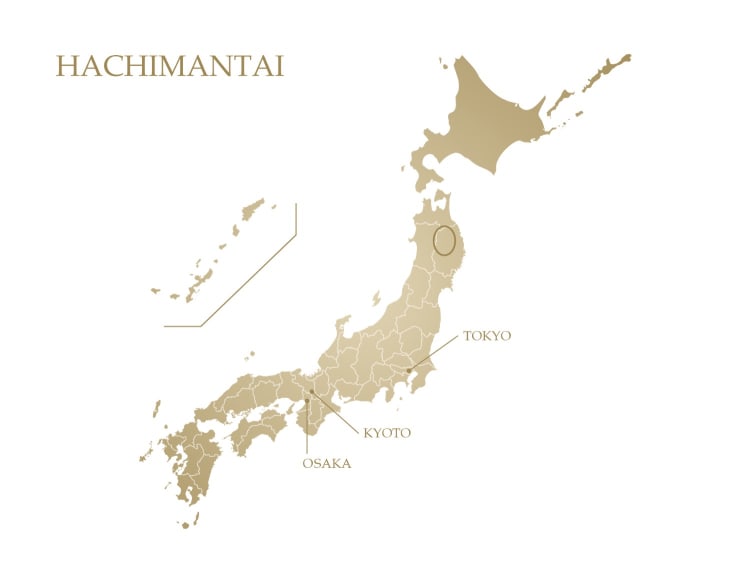

“Ke” in Everyday Moments and Tourist Experiences
Hachimantai invites travelers to step into the “Ke” of its people, the region’s everyday beauty that is both mundane and extraordinary. At Appi Kogen Ski Resort, recognized as Japan’s Best Ski Resort in 2022 and 2023 by the World Ski Awards, winter is more than just a season, it is part of the region’s rhythm of life. The powder snow, well-groomed trails, and luxury accommodations of the resort create an inviting setting for skiers and snowboarders of all skill levels. It offers 21 courses, ranging from gentle slopes for beginners to challenging runs for experts.
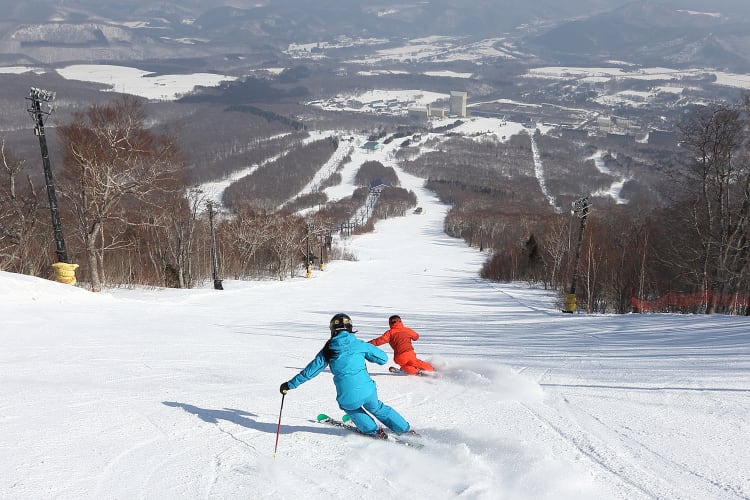
Appi Kogen Ski Resort
Beyond skiing, Mt. Moriyoshi offers a breathtaking view of juhyo (snow monsters), where wind-blown ice and snow transform trees into towering frozen sculptures. Ani Ski Resort provides an ideal vantage point for these, with a gondola ride offering a panoramic view of this winter spectacle.
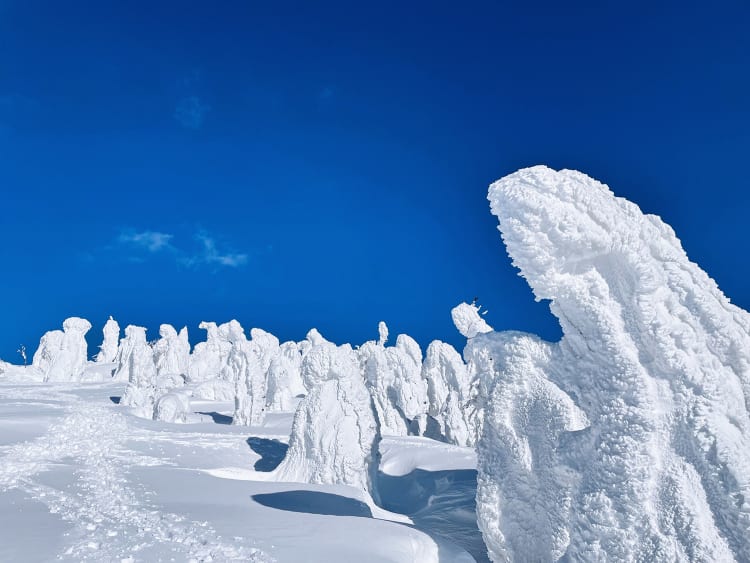
Juhyo (snow monsters)
Outside of winter sports, Hachimantai’s landscapes remain just as captivating. Mt. Hachimantai, a popular hiking destination, is home to the Hachimantai Dragon Eye, a natural phenomenon that appears from mid-May to mid-June when the Kagami-numa Pond begins to thaw, creating a striking pattern of blue water encircled by snow. The Appi Highlands, where people once relied on horses for daily life, offer horseback riding tours and educational experiences that highlight the harmonious relationship between humans and nature.
Hachimantai’s geothermal energy, meanwhile, plays an essential role in local craftsmanship. Geothermal steam dyeing, a technique unique to the region, harnesses the power of natural steam and minerals to create soft, organic color patterns on fabric. At Geocolor, a dyeing studio in Hachimantai, this process unfolds as geothermal steam interacts with textiles, leaving behind one-of-a-kind gradients and designs that reflect the landscape’s natural artistry.
Cozy Retreats Among Hachimantai’s Rolling Hills and Hot Springs
Hachimantai’s accommodations blend natural surroundings with regional hospitality, ensuring an immersive and authentic stay that reflects the essence of an untouched Japan and the warm concept of “Ke.”
ANA InterContinental Appi Kogen Resort, surrounded by snow-covered mountains and pristine winter scenery, provides a refined escape in the heart of Hachimantai’s Appi Highlands. The resort has earned recognition for its world-class amenities and local warmth, winning three consecutive World Luxury Hotel Awards since 2022. Its guest rooms offer sophisticated interiors with expansive views, while the onsen, spa treatments, and gourmet dining experiences highlight the region’s natural and cultural offerings. Whether seeking adventure on the slopes or quiet relaxation in a serene setting, the resort provides an elevated stay that captures the charm of Hachimantai’s winter wonderland.
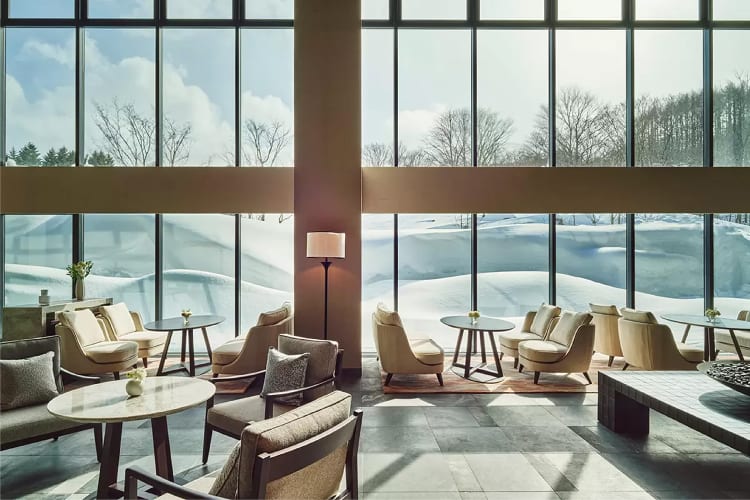
ANA InterContinental Appi Kogen Resort’s lobby
For a more secluded retreat, Natsuse Onsen Miyakowasure blends traditional Japanese aesthetics with natural tranquility. Each guest room features a private open-air hot spring bath, overlooking unspoiled landscapes that change beautifully with the seasons. The Japanese cuisine, prepared with locally sourced seasonal ingredients, enhances the experience.

Natsuse Onsen Miyakowasure
In the historic town of Kakunodate, known as “Little Kyoto,” wanoi KAKUNODATE offers an opportunity to step back in time while enjoying modern comforts. Set inside three meticulously restored storehouses from the Edo period (1603–1867) and Taisho era (1912–1926), the hotel preserves architectural details and artifacts from the past, blending elegance with contemporary design. The private accommodations provide a glimpse into samurai-era craftsmanship, while refined interiors and luxury amenities ensure a comfortable and memorable stay.
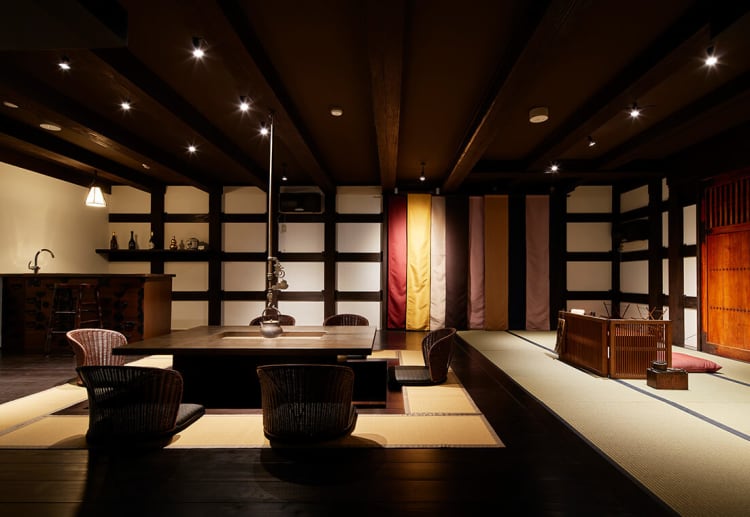
wanoi KAKUNODATE
Whether staying in a mountainside resort, a secluded hot spring retreat, or a heritage storehouse hotel, these accommodations in Hachimantai create an experience rooted in history, nature, and the region’s unique cultural identity.
Traditional Craftsmanship Rooted in Daily Life
Hachimantai’s traditional crafts reflect the values of durability, sustainability, and beauty, blending seamlessly into modern life while preserving techniques passed down for generations.
Nambu Ironware, a craft that dates back 900 years, is known for its exceptional durability and heat retention. Originally developed in Iwate Prefecture, this ironware remains a household essential in Japan. OIGEN, an ironware manufacturer in the area, produces a variety of Nambu Ironware pieces, from classic kettles that enhance the flavor of boiled water to modern cookware like bread-making pans. These products embody the craftsmanship that has defined the region for centuries and are designed to last through generations.
Appi Lacquerware, rooted in Hachimantai’s Appi River region since the Edo period (1603–1867), is crafted exclusively with Japanese wood and natural lacquer from Iwate Prefecture. Unlike most lacquerware in Japan, which relies on imported materials, Appi Lacquerware uses locally sourced urushi sap, making it a rare and valuable craft. The smooth texture and refined finish add warmth to dining experiences, and its durability allows for re-lacquering, ensuring a lifetime of use.
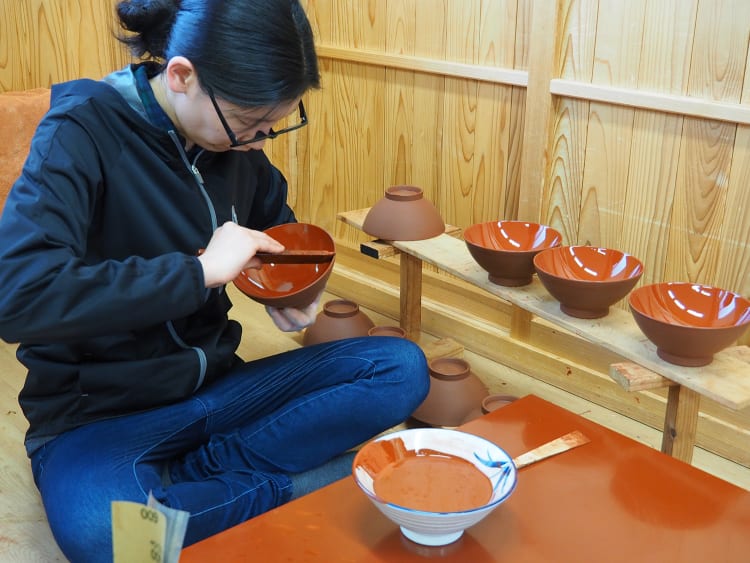
Appi Lacquerware
Hachimantai’s pristine water and high-quality rice create ideal conditions for sake brewing, a tradition upheld by Washinoo Brewery since 1829. Using mineral-rich groundwater from Mt. Iwate, Washinoo produces sake with a crisp, refined flavor.
Hachimantai is a place where the extraordinary is found in the ordinary, from the way locals embrace the changing seasons to the time-honored traditions that continue to shape their daily lives. Every experience in Hachimantai offers a deeper connection to Japan’s past and present. This is an untrodden Japan, where the spirit of “Ke” continues to thrive.

